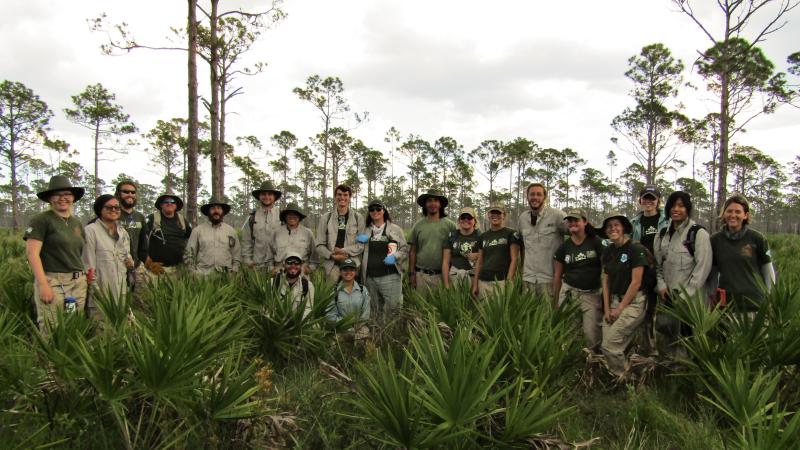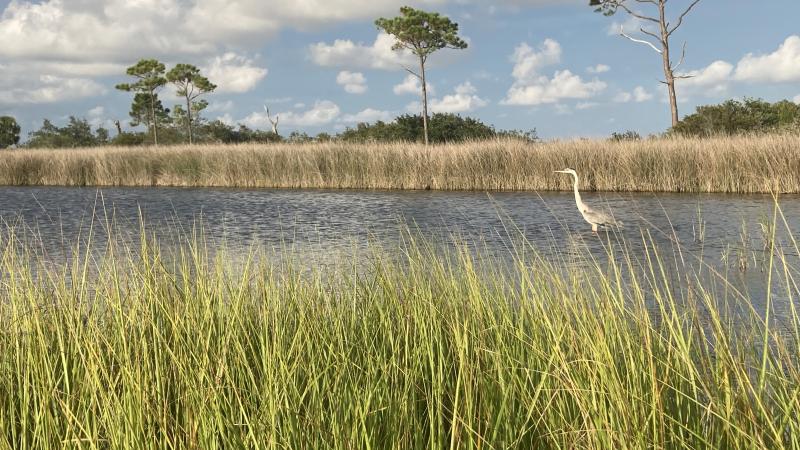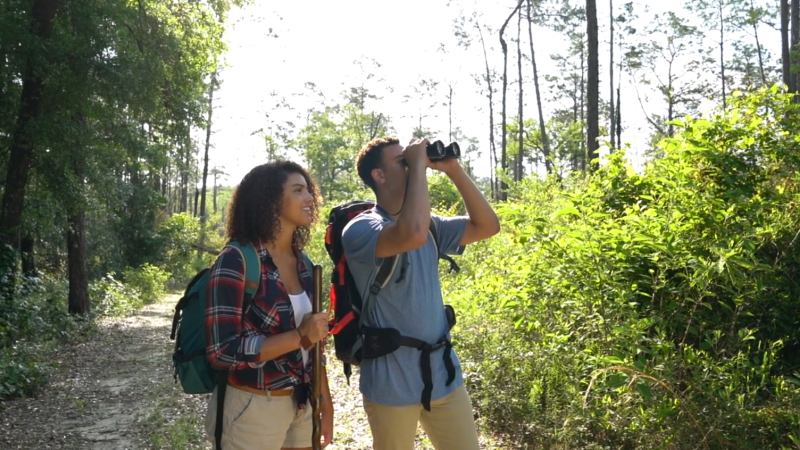Florida Paddlesports Month

Florida Paddlesports Month
Having fun while keeping ourselves and wildlife safe!
With miles of pristine rivers, clear spring runs and calm lakes to choose from, our parks are a great place for both beginners and veterans to explore. When you visit a state park, it’s important to remember that we’re sharing these spaces with the plants and wildlife that rely on these waterways for food and shelter. Here are some tips to help you and our resources stay safe!
Keep your distance
Whether you’ve spotted an alligator sunning itself on the bank of a river or a manatee lazily floating downstream, it can be tempting to get as close as possible for a better look. But it’s important to remember that just like us, animals can be uncomfortable when approached. In fact, it’s illegal to follow and touch some wildlife like manatees.
Give animals plenty of space to make sure you don’t disturb them and they don’t disturb you.
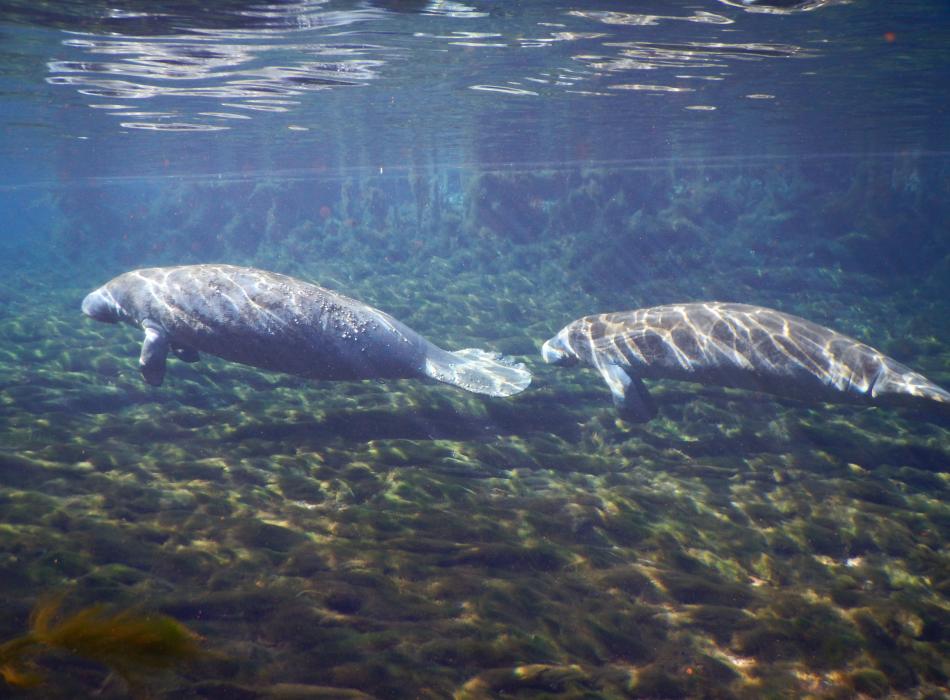
Two manatees swimming in the spring at Manatee Springs State Park.
Don’t walk in spring runs
When paddling down the crystal-clear waters of a spring run, getting out of your kayak and going for a swim seems inviting. But many of our spring runs are shallow, and all along the bottom, grasses and other aquatic plants grow to form something of an underwater forest.
Wildlife like fish and turtles rely on these grasses, and when we walk along the bottom of the river, we can unintentionally destroy some of these vital plants. When paddling in or near springs, make sure to stay in or on your watercraft, and if you do get out for a dip, keep well above the fragile plants below.
Don’t touch small animals
Nothing is cuter than seeing a tiny turtle pop its head out of the water as you paddle by. While it might seem harmless to scoop one up for a quick picture, handling wildlife can cause them a lot of stress and affect their health. Many amphibians such as frogs and toads have skin that’s very sensitive, meaning they may absorb harmful chemicals or oils from just your touch. It’s better to admire from afar than risk hurting them close-up!
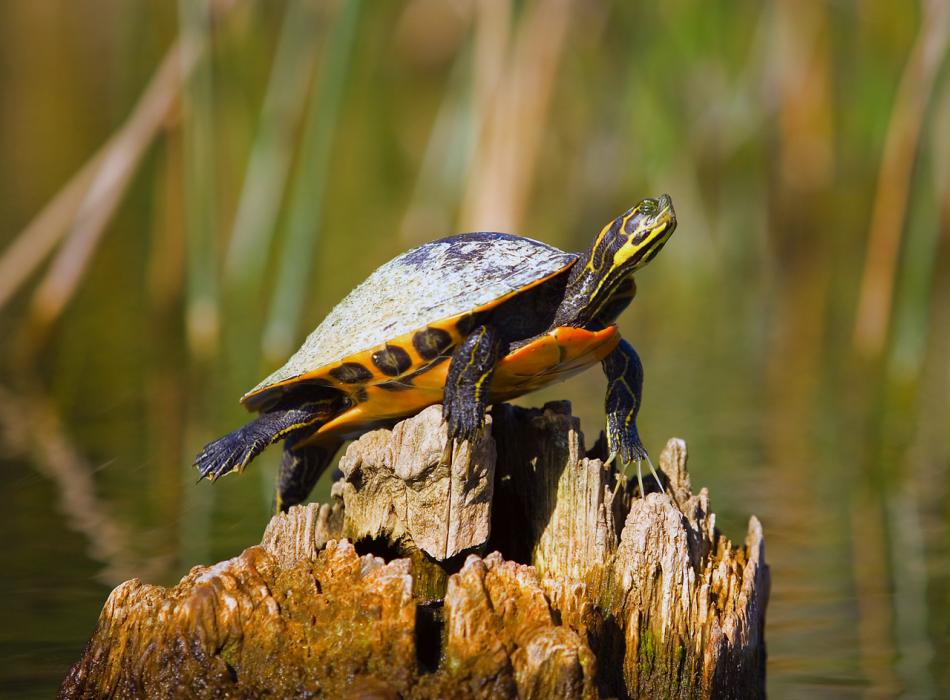
A turtle resting on a stump.
Pack it in, pack it out
Finding a shaded spot along the river for an afternoon picnic can be a great way to extend your paddling adventure! But trash like plastic and aluminum cans often ends up in our waterways where it breaks down into harmful pieces or may be eaten by animals mistaking it for food. Make sure that whatever you bring with you onto the river ends up leaving with you at the end of the day.
Never feed wildlife
It may be tempting to feed wild animals, but it is one of the most harmful things that people can do to them. Animals have evolved to eat specific diets over thousands of years, thriving on the nutrients they can scrounge or hunt for in their natural environments.
When animals are given food that’s not a regular part of their diets, they can sometimes develop health problems, gain excess weight or even become reliant on people for food. And when larger animals like alligators become accustomed to being fed, they may even approach people on sight, leading to potentially dangerous encounters. Be sure to keep your orange slices to yourself!
